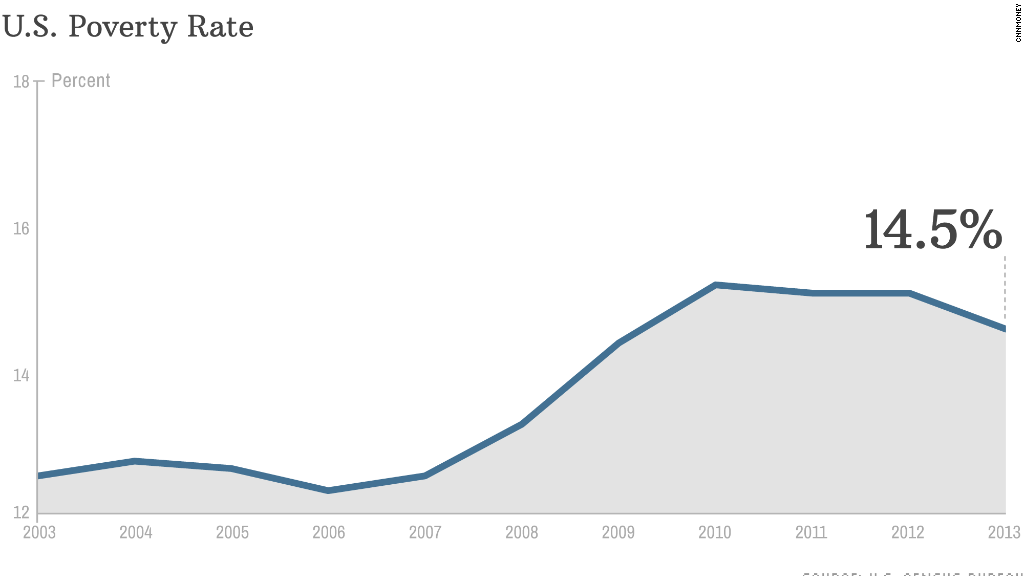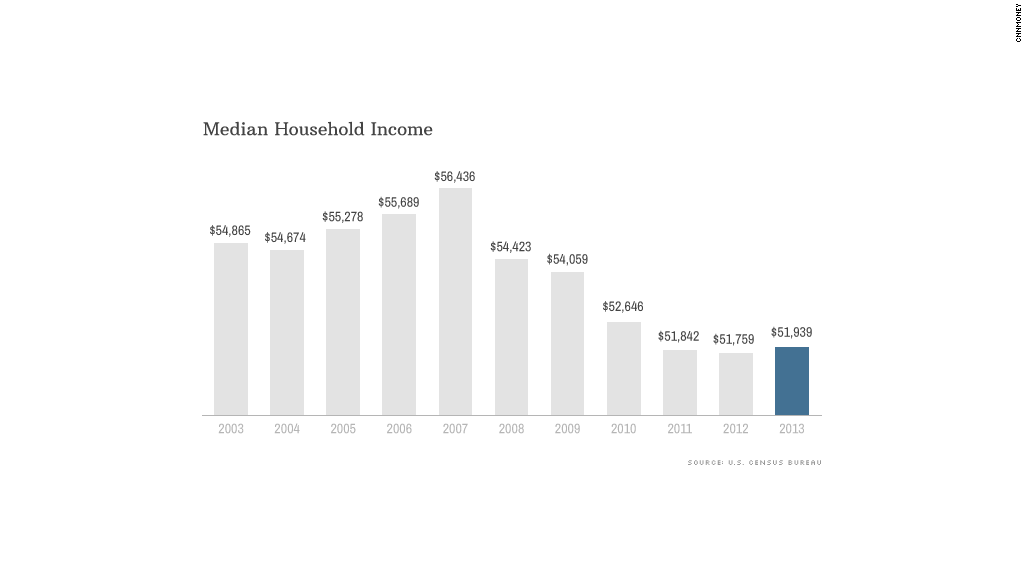
There's not much good news for working Americans struggling to rebound from the recession, except perhaps this: the U.S. poverty rate is finally on the decline.
The nation's poverty rate fell to 14.5% in 2013, down from 15% a year earlier, the U.S. Census Bureau reported Tuesday. This is the first statistically significant drop in poverty since 2006, when it was 12.3%.
A lot of the decrease is coming from people finding full-time work -- and thus earning more money. But the number of people in poverty remains stuck at 45.3 million. As America's population expands, the job growth hasn't kept pace.
Middle class Americans have even less to celebrate. Median household income remained essentially flat in 2013 at $51,939.
What's worse, median income remains only a touch above where it was in 1995. So the middle class has retained none of the gains from the economic booms of the late 1990s and mid 2000s.
And they have yet climb out of the hole of the Great Recession. Median income remains 8% lower than in 2007.
Not everyone's income, however, is stuck in neutral. The richest Americans -- those in the top 5% -- have seen their incomes shoot up 14% since 1995.
Stagnating wages are the main cause for this widening gap. Paychecks have remained the same or have shrunk for the vast majority of Americans since 1979, according to the Economic Policy Institute, a liberal think tank. But the wealthy rely more on investment income, which has skyrocketed with the rising stock market.

There were some bright spots in the Census report. The median income for young people -- age 15 to 24 -- jumped over 10%, the first increase since 2006. And senior citizens saw their median income rise about 4%, the first increase since 2009.
Hispanics saw their median income tick up 3.5%, but they were the only group to see a significant change.
Related: Are you middle class?
The poverty rate has been edging downward since it peaked at 15.1% in 2010. More people near the bottom of the income ladder are working, said Charles Nelson, assistant division chief for economic characteristics at the Census Bureau. Some 2.8 million more people were working full-time in 2013 compared to a year earlier.

Two groups saw significant decreases in their poverty rates. The number of children in poverty fell to 14.7 million, or 19.9%, down from 16.1 million, or 21.8%, the first decline since 2000. That's because many of their parents have now found full-time work.
And Hispanics saw their poverty rate fall to 23.5%, from 25.6%.
The poverty threshold for two adults and two children in the U.S. is $23,624.


